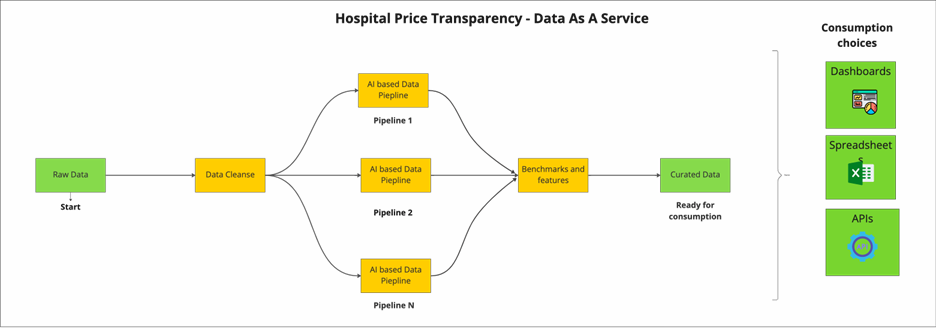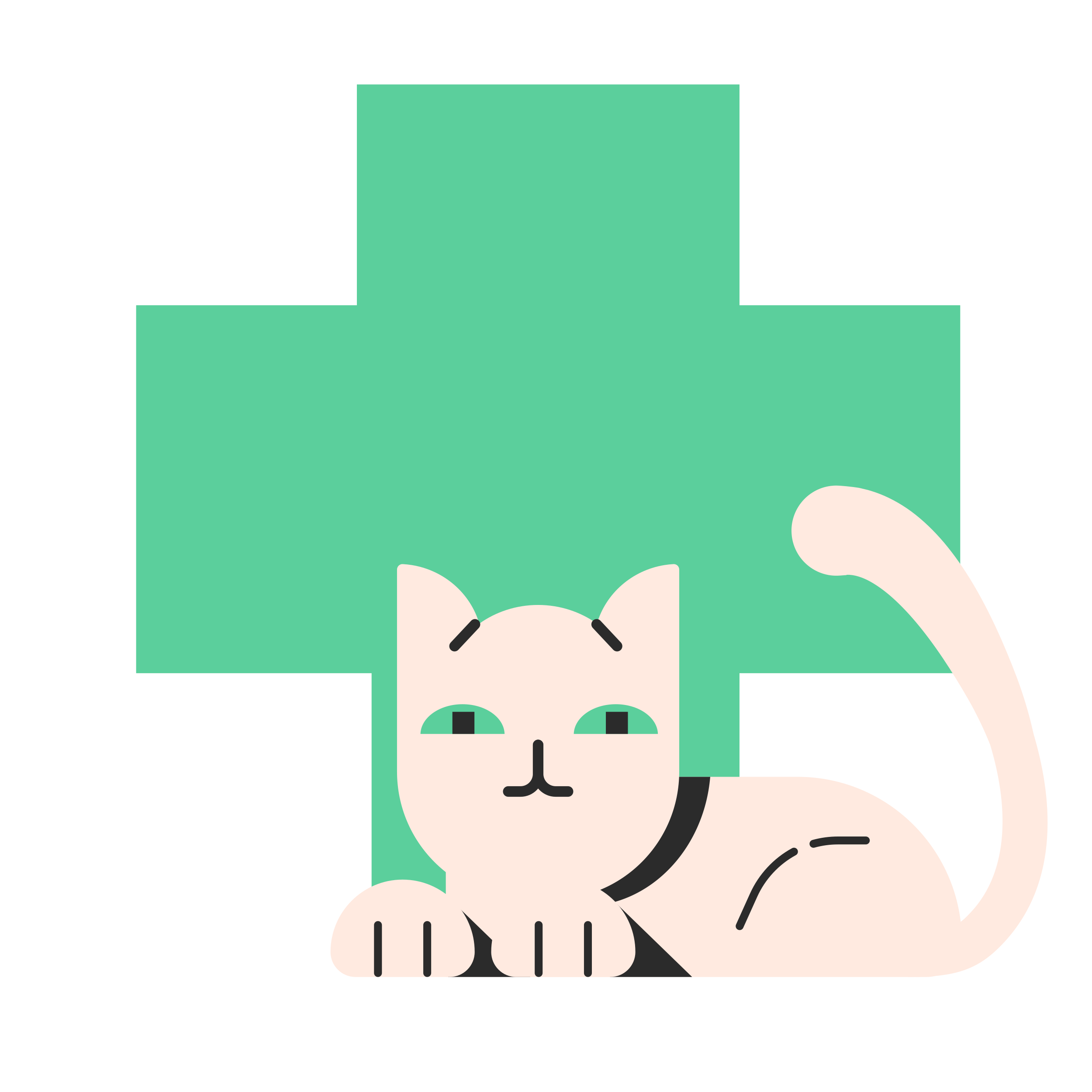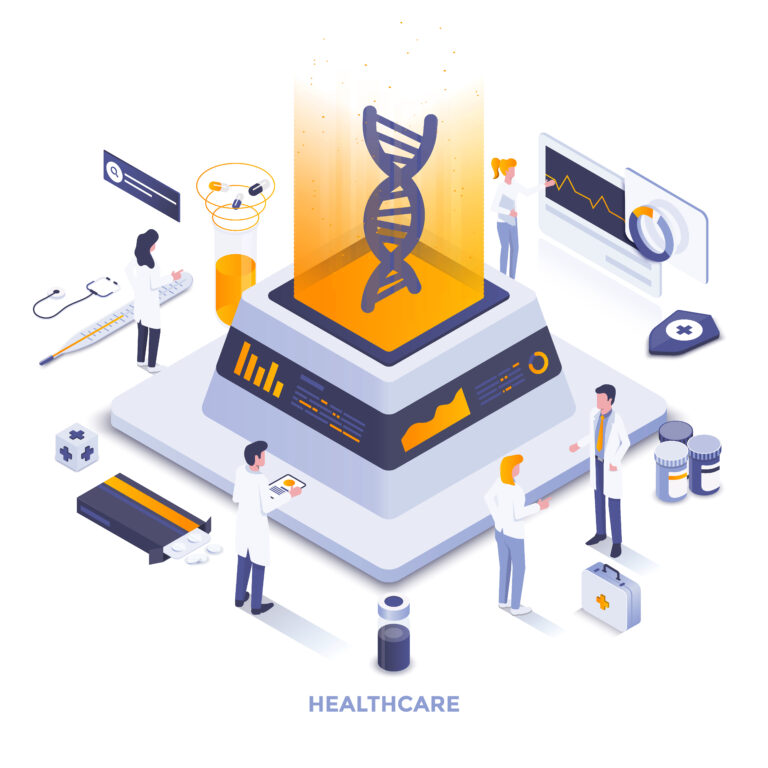Hospital Price Transparency – The cat is out of the bag
Hospital Price Transparency – The cat is out of the bag

Knowledge is power
As the saying goes, Knowledge is power. Most organizations are data-rich but knowledge poor. In industries ranging from supply chain to retail to health care, a variety of transactional systems continuously capture data points. This data is useful only when knowledge can be gained from it. Knowledge could be real-time in terms of actionable insights that can drive real-time workflows or knowledge could be analytics that is delivered as course correction mechanisms. Ideally, a combination of the two would be very potent for any executive and mid-level management.
How do you transform data into actionable insights
A well-architected data-as-a-service system can be the foundation to derive actionable insights. When data is aggregated into logical groups so that patterns can be gleaned out easily, then it is easy for business users to get alerted when action needs to be taken. The business rules that need to be set up to create the alerts and insights need to be able to be set up by business users. With the advent of NLP, this will become easier and more intuitive.
Let us look at a few examples.
Benchmark data as a service
When anonymized data is available from several companies, benchmarks can be generated using the culled data and these can be offered as a Data As A Service offering. Benchmarks in the HR space could be collected for various metrics such as employee retention, hiring frequency, post-to-hire duration, diversity and inclusion statistics, employee pay scales, employee satisfaction rating, employee tenure, promotion rates, internal vs external hires for leadership positions, and many other statistics. When benchmarks such as these are available companies can adjust their focus, goals, and executive behavior to target the achievement of these benchmarks. For example, if a company in financial services calculates its retention rate at 90% that needs to be compared with other companies of the same size in the same field. If the average for the peer group is 95%, what looked like a decent achievement now needs to be set up as an area of potential improvement.
Similarly, there are benchmarks available in other areas such as Accounts receivables, Accounts payables and Supplier management. These benchmarks could indicate how the company is performing with the collections process, how they are doing with supplier management and satisfaction. These benchmarks could also be used to layer over other performance metrics. For example, a vendor payment benchmark can be overlaid on top the vendor on time delivery metric. If the company needs to improve its vendor payment metric to get better delivery performance, that could be a key insight into improving supply chain and financial performance.
Workday benchmarks as a Data As A Service offering and PwC Saratoga benchmarks are examples of this kind of ‘a service’.
Learning models as a service
Most companies implement Learning management systems as part of their corporate function.
These learning platforms can be used as a great tool to impart compliance and mandatory training to employees but also to provide a platform for the continuous education of employees. For example, a hospital system may use a learning management system to deliver compliance training to care providers, but the LMS may also support continuous education avenues with a variety of formats. These could be video-based, byte-sized lessons, web sessions to classroom-based sessions. As employees engage with the LMS, a lot of data is collected. This provides an opportunity for the data to be collected and utilized to provide insights and actionable signals. One example could be AI/ML-based suggestions for lessons. These recommendations could be based on the usage of the system, the employee’s past usage, their peer groups usage, the employee’s role, their LMS preferences, and a variety of other parameters. Once these benchmarks are collected, they can be offered as a Data As A Service for benchmarking.
Since a mountain of behavioral data is collected from the learning platform, the data can now be used to get insights into employee behavior so the organization can better tune the learning experience and increase employee engagement and satisfaction. As in every truly useful system, the human element is the key variable that needs to be addressed. When learning is tailored to what is working employees are more engaged. Let us take the length of videos for example. With the change in generations, employees may not necessarily favor the same mechanisms of learning. Research has shown a lot of searches have shifted to TikTok from google. This is an indication that smaller, byte sizes learning material may be more popular and palatable. However, this can be a decision that is made with hard data and supported numbers rather than a gut feeling. The HCM team could conduct an A/B test for course formats and try out different course formats. If shorter videos are more engaging and the end result is a better-trained workforce that would be the right choice for the organization.
These learning models can be offered as a Data As A Service.
Healthcare transparency data
The next example we will look at is the healthcare transparency data from Hospitals and Payers. With the disclosure of this data, one could say the proverbial cat is out of the bag.
With recent legislations, there is a mountain of data available for anyone interested in sifting through the data. However, organizing the data so it can easily be queried, and valuable insights can be derived is nontrivial. However, once the data is organized then providers for example can get insights into how the competition is addressing the market.
Just as the case was with the human capital management targeted learning managed system, the key to leveraging the data from hospital price transparency comes down to a human element. A small group of analysts and business users in the hospital system are faced with tough choices and large workloads. Hospital costs and operational expenses have been steadily rising. The cost of traveling nursing for example has been an expensive variable for a number of hospitals. In times such as these, pricing for services needs to be more dynamic. Prices need to be controlled for obvious reasons such as affordability and to attract patients, but hospitals do not need to make sure they cover the costs.

How healthcare transparency data can help
When hospitals have access to pricing data and reimbursement data in real-time, they could have better leverage in terms of defending new cost projections or pushing back on out-of-control cost projections. Either way, when they are equipped with the correct data, they can have substantial conversations that are objective, and fact/number based rather than going with gut feel or gut instinct.
Similar to the financial and HR data we discussed earlier, hospitals must compare themselves with peers. So within the larger data set, benchmarks can be derived for specific hospital groups that can be then treated as peers so price comparison would be a stronger and more logical argument.
This data can be leveraged by either the hospitals or companies that help them negotiate better prices.
How Data As A Service data can be consumed
Typically, Data As A Service offerings provide a variety of ways to consume the data. You could download the data and use it in local analysis, you can include the data in existing applications or you could leverage data within the dashboards provided by the Data As A Service vendor.
Cloud Astra has curated data from thousands of hospitals and hundreds of payer plans. This data is readily available in convenient worksheets that can be downloaded.
https://cloudastra.ai/contact-us/









